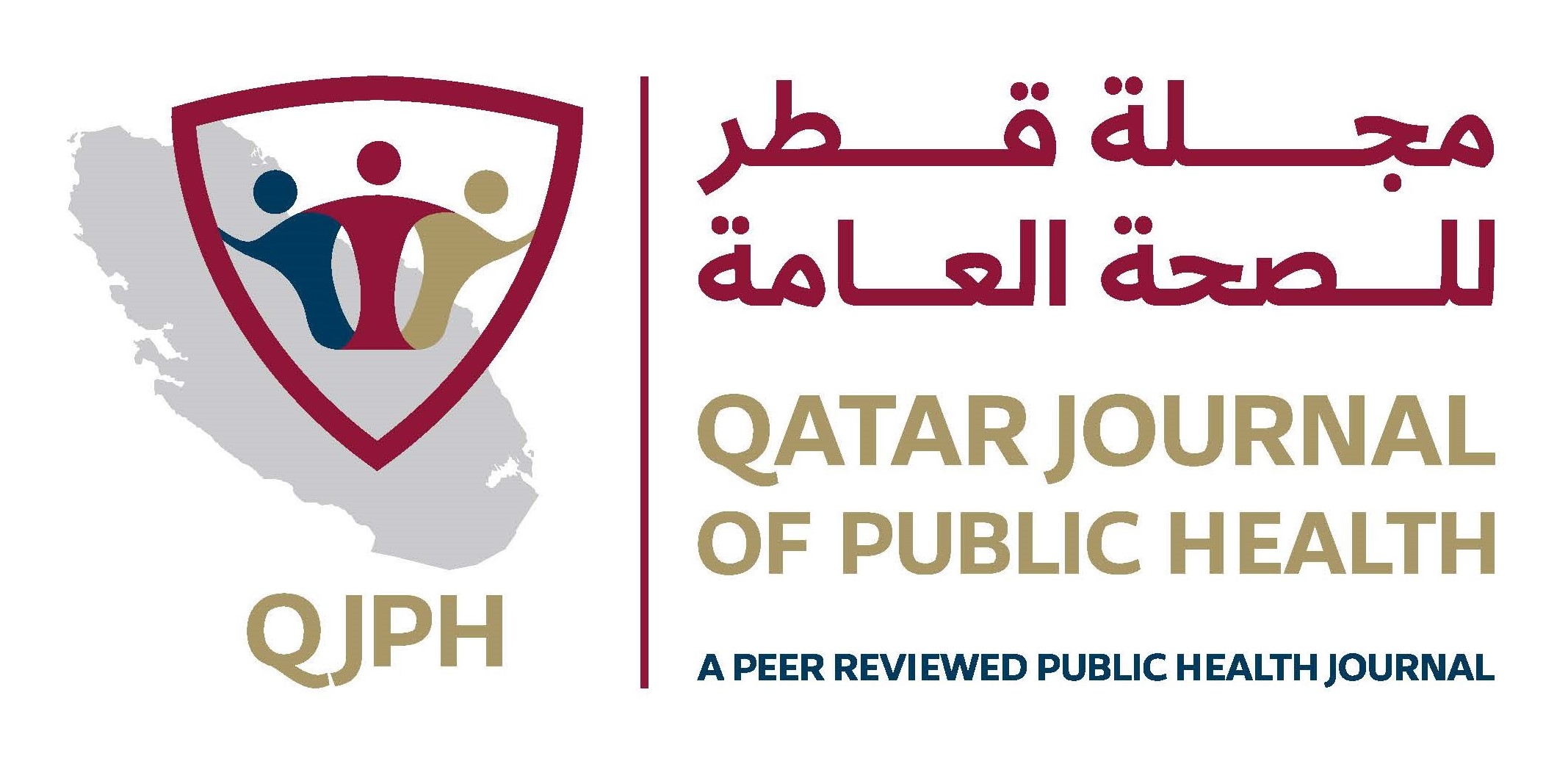- Home
- A-Z Publications
- Qatar Journal of Public Health
- Issue Home
Qatar Journal of Public Health - Current Issue
Volume 2025, Issue 2
- Research Paper
-
-
Nourishing insights: Exploring how primary healthcare practitioners’ eating habits influence diet counseling approaches in Qatar
More LessAuthors: Mohammed Alyafei, Muna Abed Alah, Sami Abdeen, Abdulaziz Farooq, Nagah Selim and Iheb BougmizaBackground: Physicians have the potential to significantly impact their patients’ health habits through effective lifestyle counseling. To influence patient behavior, physicians themselves need to practice healthy habits. The aim of this article was to investigate dietary patterns among primary healthcare practitioners (PHPs) in Qatar and their impact on related counseling practices with patients.
Methods: We conducted a cross-sectional survey among PHPs working at the primary healthcare centers in Qatar in 2020–2021 using a self-administered questionnaire adapted mainly from the World Health Organization’s (WHO’s) Stepwise survey. Institutional ethical approval was obtained before the start of the study.
Results: Of 511 PHPs, a total of 306 participated in the survey. The majority were 41–50 years old (51.4%), males (58.1%), and non-Arabs (55.8%). Approximately three-quarters (75.1%) of PHPs did not meet the WHO recommendations for fruit and vegetable intake. Of the patients, 58.2% were counseled on a healthy diet and weight management. Using logistic regression, we found that gender is the only independent predictor of meeting the WHO recommendations for fruit and vegetable intake, with females more likely to meet the recommendations than males (adjusted OR 2.9, 95% CI: 1.35–6.27, p = 0.007). Linear regression analysis showed that PHPs’ consumption of fast food and sweets on one day or less per week was significantly associated with an approximately 20% increase in the percentage of their patients counseled on diet (p = 0.012). PHPs found that lack of time and language barriers extremely limited their counseling practices.
Conclusion: The majority of primary healthcare providers do not adhere to the WHO guidelines on fruit and vegetable consumption. Physicians’ lifestyle behaviors can have a significant impact on their patient counseling practices. Implementing PHP-focused lifestyle interventions and providing behavioral support can help align physicians’ personal dietary habits with counseling practices, ultimately improving patient care outcomes.
- Top
-
- Research Article
-
-
Status of vitamin D deficiency among adult population presented to primary health care: A retrospective cross-sectional study
More LessIntroduction: Vitamin D insufficiency is on the increase globally, becoming a significant public health concern even in nations with abundant access to sunshine and food. Although Oman enjoys extended periods of sunshine, the prevalence of vitamin D deficiency has lately increased. The study aims to assess the levels of vitamin D in the adult Omani citizen population who sought primary healthcare in Oman.
Methods: We conducted a retrospective cross-sectional study in Muscat, Oman, between January and December 2015, involving 250 primary health care users aged 18 years or older who had a 25-hydroxyvitamin D (25(OH)D) test result available. Deficit, insufficiency, and sufficiency of vitamin D were determined by their respective 25(OH)D levels: less than 50 nmol/L, between 50 and 74 nmol/L, and more than 75 nmol/L (30 ng/mL), respectively. Data were reported as numbers, percentages, and mean ± standard deviation. We applied a logistic regression model to the variables.
Results: The study included 250 patients. Of the total, 95% were female (n = 238), whereas male patients comprised just 12 (5%). In terms of vitamin D levels, 227 patients were deficient (91%), 21 (8%) patients were insufficient, and only 2 (1%) patients had normal vitamin D levels. The main reasons for testing vitamin D levels were muscle ache: 71 patients (28%); screening: 67 patients (27%); bone ache: 53 patients (21%); and joint pain: 35 patients (14%). The majority of patients were tested in the following months: January (15%), February (13%), and March (14%). The research demonstrated a correlation between vitamin D levels and solar exposure, with the patients receiving sun exposure on a weekly basis (p = 0.000034).
Conclusions: The most common clinical presentations of vitamin D deficiency were bone pain and muscle pain, and there was substantial correlation between vitamin D levels and sun exposure groups. Low vitamin D levels are common among seemingly healthy Omani females residing in Muscat. Public awareness, supplementation, and fortification of food with vitamin D are warranted.
-
Volumes & issues
Most Read This Month Most Read RSS feed


